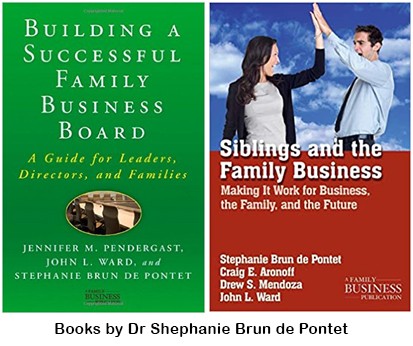Good mental health and wellbeing mean different things to different people. Each one of us has to pave their way to a life that is relevant, consequential, and rewarding. COVID’19 has taken the world by storm in the last 3 months. These are unprecedented times and the most common emotion that all of us are experiencing fear followed by anxiety, and these could make people behave in a manner, which are otherwise inappropriate.
The next challenge was facing a complete lockdown. This was of course done to safeguard people and stop the spread of infection. Staying at home for some time may be relaxing but for prolonged periods it may become taxing and frustrating for many. However, such situations have become the norm today and people need to understand the importance of confinement and maintain good mental, physical, social health and wellbeing.
Despite the strict measures of confinement, some people got infected with the coronavirus. We need to understand that people infected with coronavirus have to be handled with care, empathy and kindness. This condition should not be stigmatized to the extent of isolation and rejection by the family, friends and society. The people who have recovered from the coronavirus will go on to lead a normal life with their families and also continue to do their jobs. Hence, linking the people with their former medical condition will only stigmatize people more strongly.
This disorder has instilled a lot of long-lasting fear anxiety and distress in the individual and society. To minimize this impact, it is advised not to read and listen to constant news and progress of the disease. Additionally, developing a positive attitude with a spirit to overcome stressful times is important. Protecting oneself first to protect others is the first foot forward and being actively involved and giving assistance to others who are needing it will benefit both; the people receiving help and those who are helping.
When it comes to children, they need special care and attention. Positive ways of expressing their fear and sadness can be through creative activity such as dance and drawing which is a safe and familiar platform for expression and hence catharsis through this can alleviate their anxiety.
Therefore, well-being is necessary for a holistic healthy existence. The three areas that are covered under this are Mental, Physical and Social Well Being.
MENTAL WELLBEING
- Mindfulness – The surroundings are constantly flooded with constant stimuli, both positive and negative. For people to keep positive and healthy a need to Practice Mindfulness, which asks people to be aware of all that is going on in and around them but bring all the attention to the “present and to now”. One can learn to live for the moment one is in and be aware of each passing thought and feeling. Studies show that mindfulness helps people in coping with traumatic events and emotional states that lead to reducing anxiety and stress.
- Breathing – When tense and anxious take a deep breath to relax. In the present times all are all familiar with Pranayam, also referred to as Mindful Breathing, which helps to regulate emotions and manage stress and, in the process, mentally separate self from negativity.
- Meditation promotes reducing negative emotions through relaxation and helps deal with stress, build mental and emotional resilience, thus leading towards relaxation and a positive mindset.
PHYSICAL WELLBEING
- Routine – During this period of confinement to the house setting, following a routine is very important for well-being. It is important to prioritize work and set designated slots for tasks that need to be completed.
- Set up a workstation – It helps to set-up a workstation for yourself. It gives a feeling of going to work and separates home and work life. Moving around for a minute every hour while working to keep the body system active for good physical health and better focus on work and productivity can be achieved. Scheduling time outside of work with family and friends regularly helps to avoid emotional inertia and loneliness which is needed for physical well-being.
- Regular meals and exercise patterns – A healthy diet and exercise are important for good mental health as the mind and body are intrinsically related. Hence, during confinement, the regularity of meal and exercise/yoga patterns are important for a healthy physical and mental balance.
- Sleep – A regular sleep pattern is important to maintain as sleep is a very important aspect of physical and mental wellness. During this confined period, one tends to lose the sense of time and can forget that one has to follow a regularity for sleep also. Studies have proved that sleep irregularity can contribute to the malfunction of the brain and body and also leads to physical and mental illnesses. A good sleep of 8 hours can lead to improved mental and physical health during confinement.
- Hobby – This is also a perfect time to try out a new hobby, which one wanted to take up but could not due to pressing times. This will give a sense of mental freedom and growth and hence physical confinement will not feel so oppressive; stress anxiety and depression will reduce; cognition and creativity will improve immensely.
SOCIAL WELLBEING
To be positive in such times of confinement one has to shed the feeling of helplessness and adopt an optimistic approach. This can move people towards contributing to society with a helping hand creating a sense of purpose. It further enhances self-worth which gives a good mental and physical health. Acts of kindness increase happiness positivity and reduce negativity.
Sharing positive news articles and items to help spread positivity and also be sensitive to children and elders and how they should be explained the situation in an age-appropriate manner is very important for emotional security and well-being. Volunteering to be part of community drives for giving a helping hand, imparting information, tele counselling or guidance through various social media which will serve as a respite for many, gives a sense of being part of the community and the feeling of isolation and depression can be countered.
Connected with Family and Friends
Virtual connectivity is the new normal since people cannot physically meet and socialize. The socialization process is as important as our basic needs for survival and lack of it can make people go into depression and loneliness which will further lead to poor mental and physical health. So, staying connected virtually with family and friends is imperative for overall well-being using all modes of communication. Speaking and listening is a double-bind relationship which helps both. Reducing screen time is also recommended as too much screen time can lead to too much information on the same issue and leave you with emotions of fear and anxiety.
CONCLUSION
To sum up, people should try to maintain a routine which can include all family and work demands with special attention to children and the elderly. During confinement, some emotions in family members become exaggerated e.g. anxiety, anger, stress, agitation and fear. Practical and emotional support needs to be provided through informal and health professionals. Any underlying health conditions need to be constantly addressed with access to medication and active socialization and connectivity for any assistance when needed physically and emotionally is very reassuring. Simple exercises, regular sleep, healthy diet, need to be regularly maintained for good physical and mental health during confinement as is proven through research.
As a community people will follow new practices and extend support in such times of confinement and new relationships and bonding will emerge from this experience with the learning of how to develop a healthy lifestyle and feeling of well-being.
Please contact us at neeru.singh@iilm.edu for free counseling by our reputed Psychologists.














 Core purpose is an organisation’s most fundamental reason for being. It should not be confused with the company’s current product lines or customer segments. Disney’s core purpose is to make people happy – not build theme parks and make cartoons. Theme parks or cartoons or any other product will flow from the core purpose.
Core purpose is an organisation’s most fundamental reason for being. It should not be confused with the company’s current product lines or customer segments. Disney’s core purpose is to make people happy – not build theme parks and make cartoons. Theme parks or cartoons or any other product will flow from the core purpose. Giving example of a company and how it has adapted its business in the current corona crisis by reinventing itself she spoke about J W Lopes, a 4th generation family owned suppliers of produce and dairy to restaurants and institutions. It has changed its business model shifting from institutions to residential distribution by configuring the new way of distribution channel. The company has rightly assumed that people are spending more time trying out new dishes at home and that they would like to have new fresh produce and dairy products. New ideas and experimentation are needed to survive and thrive in the new normal.
Giving example of a company and how it has adapted its business in the current corona crisis by reinventing itself she spoke about J W Lopes, a 4th generation family owned suppliers of produce and dairy to restaurants and institutions. It has changed its business model shifting from institutions to residential distribution by configuring the new way of distribution channel. The company has rightly assumed that people are spending more time trying out new dishes at home and that they would like to have new fresh produce and dairy products. New ideas and experimentation are needed to survive and thrive in the new normal.






